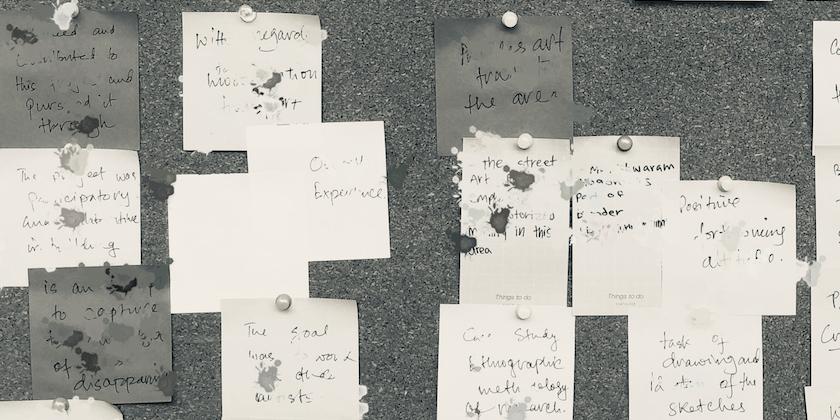The Girlboss VS the Sleepy Girlfriend
The Girlboss archetype is known for linking the relentless spirit of hustling to the notion of feminism, and the constant glamourisation of the “grind”, creating a rigid, capitalistic rendition of empowerment wherein the attainment of professional benchmarks within the existing superstructure is equated with being powerful. The Girlboss aesthetic, at its zenith between late 2014 and 2019, was easily identifiable across social media, owing to its pastel pink moodboards, gold-tainted and bold-lettered slogans that declared, “you can do it” and collages of women clad in blazers, and the ambience of corner-offices, collapsed when it was observed that the movement only possessed the mere optics of female empowerment, exclusionary nature, an abject disregard for intersectionality and an absence of methods to address existing inequalities, wherein feminism was depicted in a marketable fashion and the advancement of individual goals was branded as a process for dismantling the patriarchy.

After Girlboss had fallen out of favour, a repackaged version, the #ThatGirl trend enveloped the hemisphere of self-improvement on TikTok and Instagram, wherein the essence of being “that “girl is located within one’s ability to perform a multitude of tasks: expertly navigating through a skincare routine of no less than eight to ten steps, doing elaborate Pilate exercises and impeccably intricate makeup rituals for “glasslike skin”, flaunting an elegant wardrobe, valorizing the phenomenon of overworking and the paucity of downtime, consuming several beverages ranging from coffee, cleanse juices, to smoothies before midafternoon, devouring avocado-toasts, formulating TikToks about the essentiality of clean eating, managing to find time for bullet-journaling and other artful pastimes, and deftly carving time-blocks for a bustling, party-studded social life and much more, thereby following burnout-inducing lifestyles, and ultimately, filming an aesthetically palatable montage of oneself doing all the aforementioned tasks for the pristine Reel or Instagram grid-post.
The heavily-filtered unattainable perfection, rooted in the capitalist and materialistic utopia of ThatGirl, has been challenged by numerous countercultures on social media, such as the Sleepy Girlfriend meme and its ironical aesthetic format. The Sleepy Girlfriend aesthetic is not in tandem with the visual Tumblr precedents but, is represented as a parody of actual aesthetic traditions and as a subversion of the ThatGirl cliché. Unlike the nine-to-five and five-to-nine ceaseless to-do lists of ThatGirl, a quintessential Sleepy Girlfriend would make vlogs (video blogs) and TikToks about her slow-paced quotidian life, and treat every household chore ceremoniously: she would leisurely stir her ornate porcelain cup brimming with green tea, embark on a barefoot stroll across the lawn, make simmering bowls of soups and broths, indulge in self-pampering sessions, sporadic naptimes, and her aesthetic canvas would contain snuggly nightwear, cozy pajama sets, sheet-masks, a well-rested and minimal makeup look, adorable eye-masks, an armchair overlooking a garden, fluffy blankets, vivid dreamcatchers, woolly duvets, feathery slippers, watching the Care Bears cartoon, light-toned nightgowns, bedtime rituals and soothing lullabies; for the Sleepy Girlfriend, rest is empowering and ThatGirl’s uninterrupted hustle is a distant anomaly to her.
Of the Soft Girl and the Clean Girl and their Tactful Minimalism
A variety of parallel aesthetic neocultures such as Soft Girl and Clean Girl have also attained prominence in the fashion and beauty crevices of Instagram and Tiktok; however, they have elicited criticism for co-opting the concepts and not crediting the trailblazers of this particular trend: women of colour. For instance, the Soft Girl aesthetic is associated with placing floral hairclips in one’s hair, butterflies flitting across a blossoming landscape, doe-eye makeup, subdued pink blush and contouring, Bratz doll-inspired lipgloss, knee-high socks, possessing hobbies such as sketching or baking, and an overall conformation to the conventional perception of femininity. Abstracted from its contextual topography, the Soft Girl archetype has acquired a novel form in the arena of pop-culture and social networking: it is more than just a flower-crown-wearing coy vision of submissiveness; the Soft Girl aesthetic originated from a Nigerian group of social media influencers, wherein spiritual attunement with oneself is prioritised, emancipation from the “strong black woman” stereotype is made plausible and above all, the movement revels in vulnerability and seeks to reacquaint oneself with their higher selves, away from the rat-race of being a mere cog in the machine.
The typical Clean Girl appearance, marked by hair neatly slicked back into a bun or pigtails, golden or silver hoop earrings, well-hydrated, moisturised and dewy skin, baby pink-stained lips, and a rose-gold glow, that is expertly manufactured by the utilisation of primers, highlighters and contouring in order to present the effortless “no-makeup” look, with a simplistic spaghetti-strapped crop top, has been adopted by celebrities such as Kendall Jenner and Hailey Bieber through their close-up Instagram selfies. A counter-stream of TikToks have observed that Clean Girl look was popularised by women of colour: black women, South Asians and Latinas have worn hoops earrings and stylish buns through the early nineties and to deem it a “new” fashion statement and to attribute it to the mostly white celebrities and virtual influencers who have coopted it, would result in the problematic erasure of the actual trendsetters.
Coveting Authenticity: The Rise of BeReal, Finstas, 24 Hour-Streamers
The usage of BeReal, a French social media app, has soared since its launch in 2022. The application sends a notification to all its users at different times wherein they are supposed to take a snapshot of whatever they are doing or experiencing at the given moment through both the front and back cameras; the users can’t access their friends’ BeReals unless they post their own: an endeavour that is entirely devoid of any serpentine schemes of staging the perfect shot with ring-lights, hi-tech cameras and layers of photoshop. The decision by the Meta-owned Instagram in December 2022 to test a similar feature named “Candid Stories” suggests that a phenomenal number of social media users are coveting authenticity, a world apart from extreme-curation.
Twitch, an American broadcasting platform, is home to gaming streamers, ASMR artists and talk-show hosts; many game-players also stream their regular lives for the thousands of subscribers that watch them play games such as League of Legends or Minecraft and interact with their content through live-commentary and paid subscriptions which are produced through subathons, which consist of uninterrupted livestreaming, creating a relaxed environment of familiarity between the streamer and subscriber, lacking any aesthetic pretense.
The meme format called “point of view: you walk into my room at 3am” has gone viral across TikTok and Instagram, eliciting humorous candor form users wherein through a collage or a video, one is encouraged to showcase what they would be up to at the time: a midnight snack-binge, practicing a girl-band choreography or a The Office marathon.
Since it would be a cumbersome task to wrest unwanted followers from one’s profile page or to create an exclusive Close Friends Instagram Story section just for a particular segment of one’s social circle, a virtual location wherein one would be freed of any obligation to conform to digital aesthetic lore has been invented: their Finsta (fake Instagram) or their alt-Twitter: an invite-only haven of online seclusion. Finstas and alt-Twitter are private or locked social media accounts which can be only followed by those who have been handpicked by the user themselves and within this safe space, they can shed their inhibitions about being in accordance with the façade of their brand and post and purge whatever they please to- haphazard camera angles, unflattering selfies, video-call screenshots, rambling rants, controversial opinions, their dating lives, or confessions: a shade of candidness that they could never convey on their publicly viewable accounts.
With regard to fashion, avant-garde TikTok trends such as the model-off-duty look, the barely-there eyeliner (intentionally smudged and a punk-chic subversion of photo-ready eye-makeup) and redesigning of billowing gowns with eccentric cutouts and embellishments are also transcending any aesthetic demarcations.
Goblin Mode – On The Theatrics of Digital Self-Representation’
Essay/Article commissioned by: TDLM Editorial
Written by: Ria Chakraborty
[Political Science; Lady Shri Ram College for Women; Literary Reviewer]Graphics/Art/Illustration by: TDLM Design Team
‘Digital Aesthetics – an ever-evolving Art Form’ First Published in The Daily Life Magazine on











 Report This
Report This
Leave a Reply
You must be logged in to post a comment.